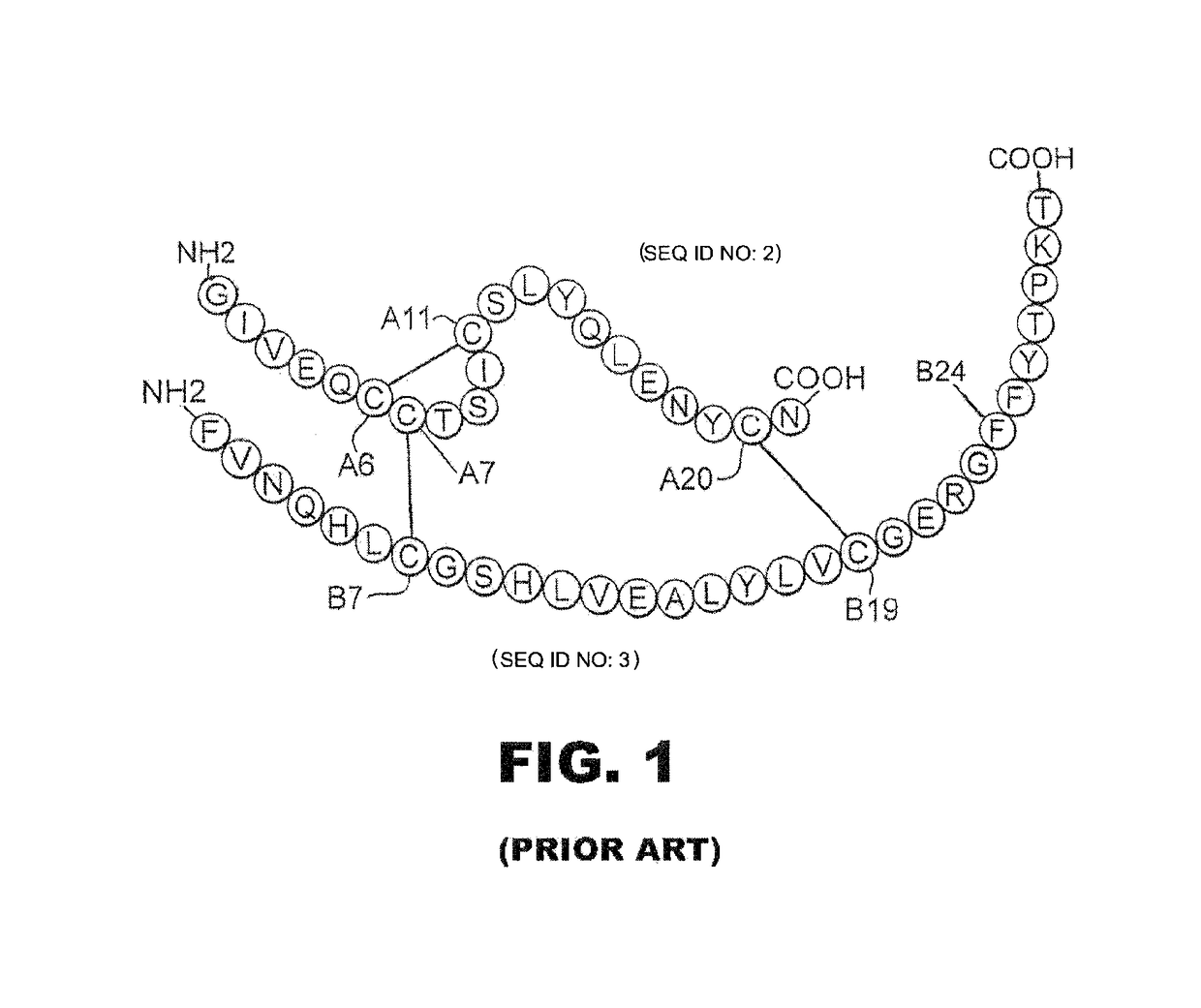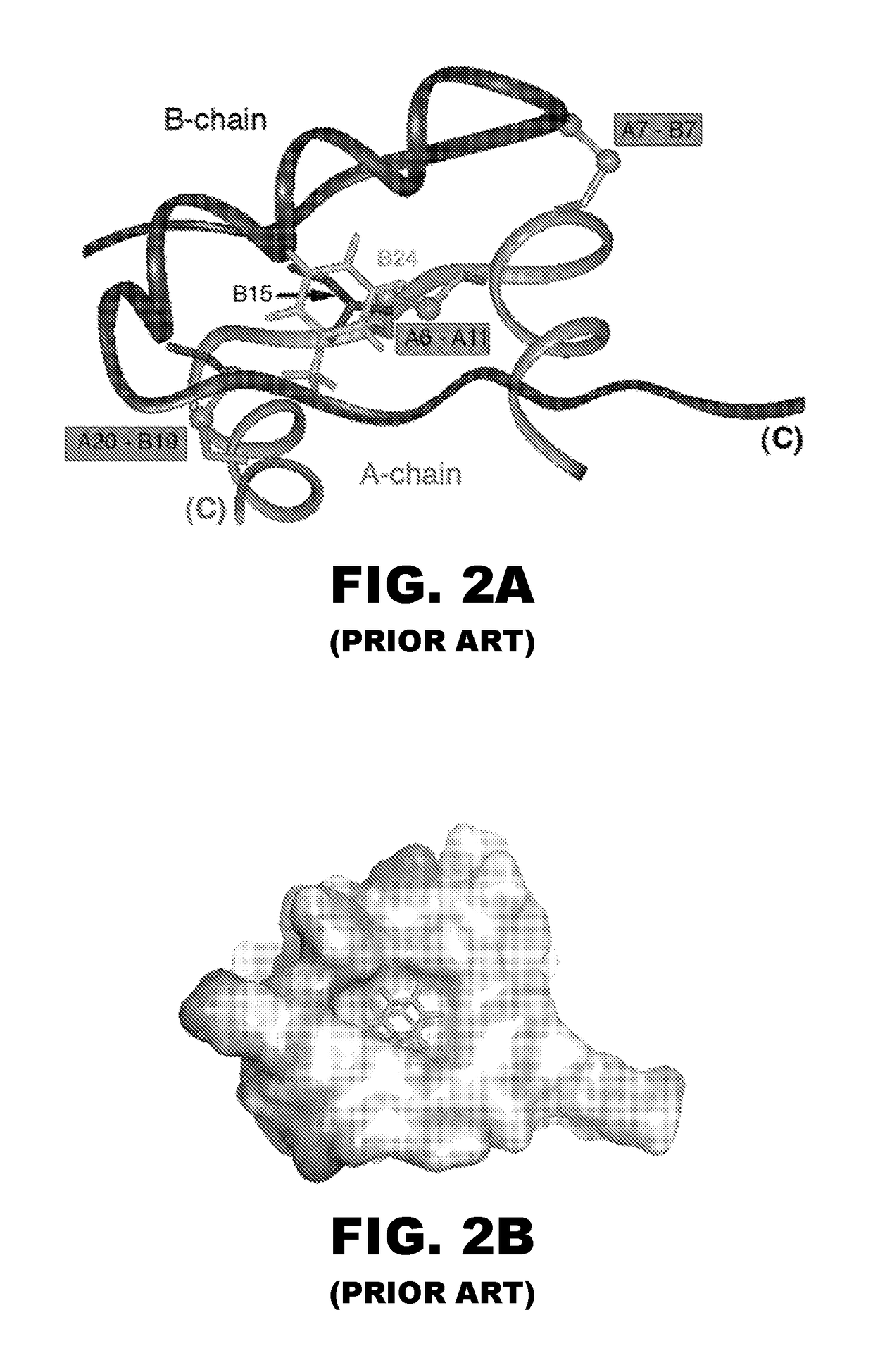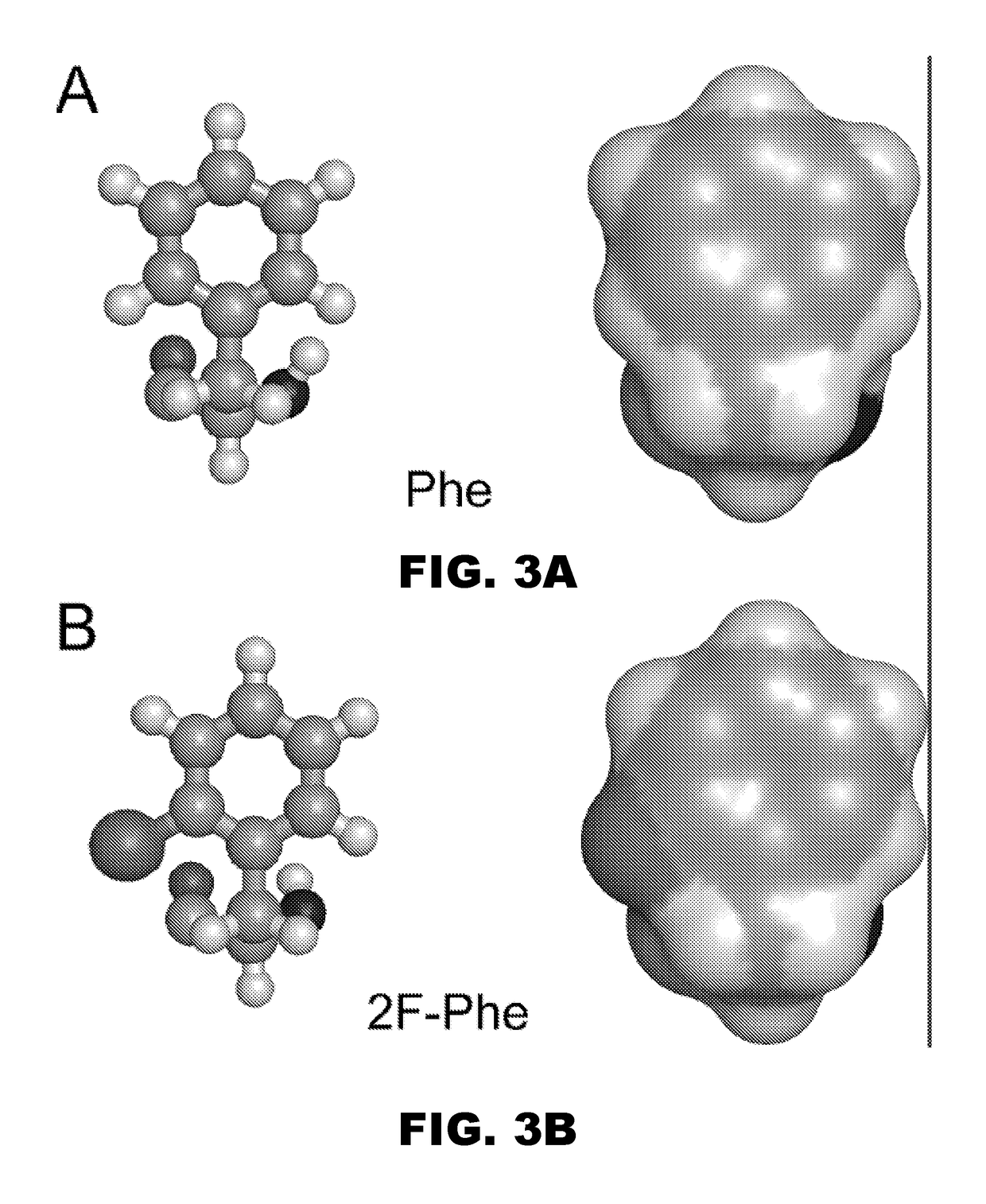Ultra-concentrated rapid-acting insulin analogue formulations
a technology of polypeptide hormone and analogue formulation, which is applied in the direction of peptide/protein ingredients, drug compositions, metabolic disorders, etc., can solve the problems of increasing reducing the efficacy of glycemic control, and affecting the safety and performance of insulin pumps, so as to achieve rapid absorption and sufficient chemical stability and physical stability, the effect of reducing the risk of hypoglycemic episodes
- Summary
- Abstract
- Description
- Claims
- Application Information
AI Technical Summary
Benefits of technology
Problems solved by technology
Method used
Image
Examples
Embodiment Construction
[0036]The present invention is directed an insulin analogue that enables rapid PK and PD to be maintained at a broad range of insulin concentrations from U-100 to U-500. The analogue then maintains at least a portion of biological activity of the corresponding unmodified insulin or insulin analogue and maintains similar or enhanced thermodynamic stability and resistance to fibril formation. We have invented an insulin analogue with PK / PD properties similar to or more rapid than regulation formulations of wild-type human insulin at U-100 strength (e.g., Humulin R® U-100; Eli Lilly and Co.) such that these PK / PD properties are not significantly affected by the concentration of insulin analogue in the range 0.6 mM-3.0 mM.
[0037]The present invention pertains to a non-standard fluorous modification at position B24 to improve the properties of ultra-concentrated insulin formulations with respect to rapidity of absorption following subcutaneous injection. In one instance the insulin analog...
PUM
| Property | Measurement | Unit |
|---|---|---|
| pH | aaaaa | aaaaa |
| pH | aaaaa | aaaaa |
| temperature | aaaaa | aaaaa |
Abstract
Description
Claims
Application Information
 Login to View More
Login to View More - R&D
- Intellectual Property
- Life Sciences
- Materials
- Tech Scout
- Unparalleled Data Quality
- Higher Quality Content
- 60% Fewer Hallucinations
Browse by: Latest US Patents, China's latest patents, Technical Efficacy Thesaurus, Application Domain, Technology Topic, Popular Technical Reports.
© 2025 PatSnap. All rights reserved.Legal|Privacy policy|Modern Slavery Act Transparency Statement|Sitemap|About US| Contact US: help@patsnap.com



